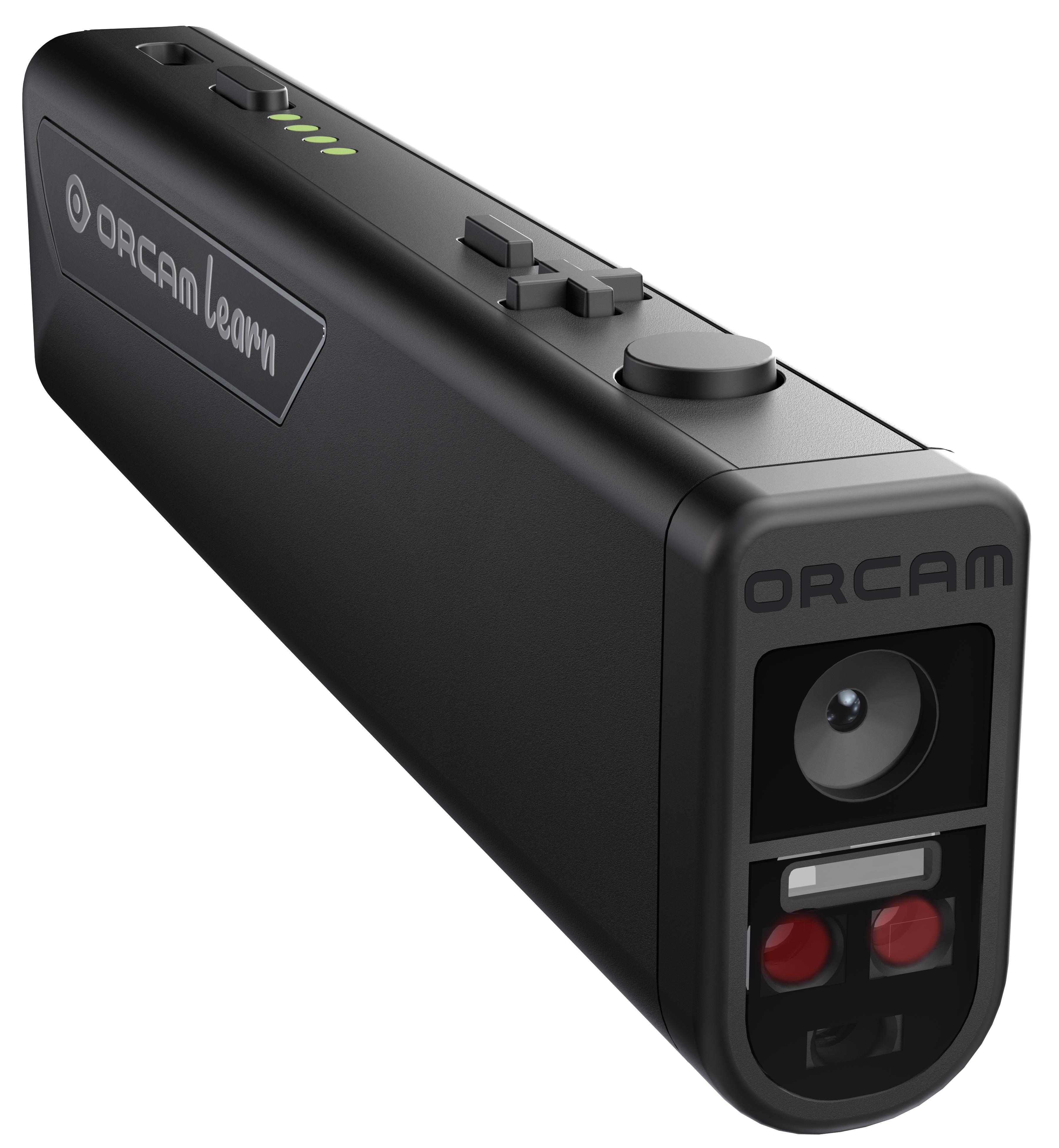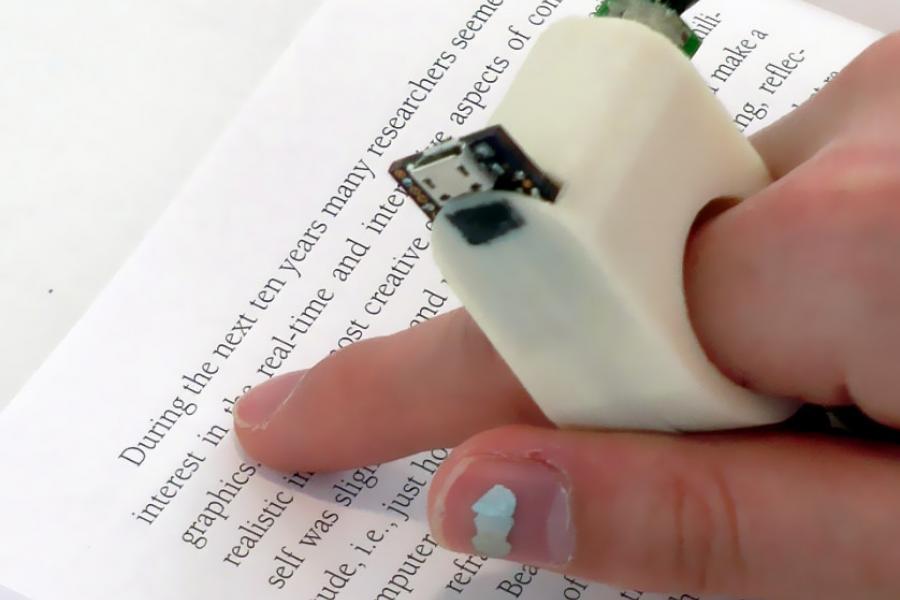Wearable Technology for Low Vision: Making Routines Easier
Wearable Technology for Low Vision: Making Routines Easier
Blog Article
Enhancing Lives With Advanced Assistive Tools for the Blind
The assimilation of innovative assistive gadgets for the blind is changing just how people experience their environments and communicate with their areas. Developments such as enhanced fact smart glasses and advanced digital travel help not only facilitate navigating yet also boost general lifestyle. These technologies foster a feeling of freedom and self-efficacy amongst users, allowing them to undertake day-to-day tasks with newfound self-confidence. However, the ramifications of these developments expand past simple performance; they challenge social understandings of impairment and independence. What does this advancement mean for the future of assistive modern technology and its duty in encouraging people?
Review of Assistive Instruments
Assistive gadgets for the blind include a diverse variety of tools and technologies made to boost freedom and boost the top quality of life for individuals with visual impairments. These gadgets accommodate different requirements, from navigation and movement to interaction and everyday task monitoring.
Among the main groups of assistive tools consists of wheelchair help, such as white canes and guide canines, which help customers browse their surroundings safely. Digital travel aids, geared up with sensors and audio responses, also play a significant function in movement enhancement.
Furthermore, devices that aid with daily living tasks, such as adaptive kitchen area tools, Braille labels, and talking watches, encourage individuals to execute tasks independently. Interaction aids, including display viewers and Braille display screens, facilitate access to information and allow individuals to involve effectively with the electronic world.
Moreover, low-tech services like multiplying glasses and large-print materials continue to be crucial for several users. Collectively, these assistive gadgets serve not only as functional tools yet likewise as essential enablers of freedom, cultivating better involvement in a world that frequently focuses on sighted experiences. Their assimilation into daily life is necessary for advertising inclusivity and enhancing total wellness for those with visual disabilities.
Innovative Technologies in Use
Technology in modern technology has significantly transformed the landscape of devices offered for people with visual problems. Among one of the most notable developments are smart glasses incorporated with augmented truth, which offer real-time navigating aid and object acknowledgment. These devices take advantage of advanced video cameras and expert system to provide acoustic hints, boosting the individual's spatial awareness and freedom.
Additionally, mobile applications have become powerful sources, allowing customers to recognize money, read text out loud, and navigate unknown environments with spoken instructions. Tools such as Braille displays and refreshable Braille devices proceed to advance, supplying seamless connection with smartphones and computer systems, therefore boosting communication and accessibility to details.
Wearable technology, consisting of smartwatches furnished with voice-activated functions, better equips customers by assisting in fast access to notices and signals without requiring aesthetic interaction. Tactile maps and 3D printing are likewise acquiring traction, supplying concrete depictions of areas that help in positioning and wheelchair training.
Collectively, these ingenious innovations not just boost the lives of aesthetically damaged people yet additionally foster greater freedom, inclusivity, and involvement with the more comprehensive neighborhood, therefore reshaping assumptions of accessibility. (Braille displays and notetakers)
Individual Stories of Empowerment
Empowerment typically emerges from personal experiences that highlight the transformative impact of innovation on people with aesthetic disabilities. Take, as an example, the tale of Sarah, a young musician who restored her interest for paint through using a clever walking stick geared up with challenge detection. This tool not just facilitated her wheelchair yet instilled a newly found self-confidence, enabling her to navigate public areas separately and pursue her creative undertakings.

These stories emphasize the profound effects that progressed assistive gadgets can carry life. By enabling people to overcome barriers, technology cultivates a sense of freedom and self-regard. Such empowerment stories serve as a testament to the potential of development, showing just how the right tools can significantly enhance quality of life and open doors to new possibilities for those with aesthetic impairments.
Advantages of Advanced Solutions
The combination of innovative technology right into assistive gadgets significantly changes daily experiences for those impacted by vision loss. OCR devices for the blind. Instruments such as clever canes furnished with sensors, navigation apps, and wearable innovation are created to give real-time responses, improving spatial awareness and lowering the threats associated with mobility.
Additionally, progressed assistive innovations foster social incorporation by facilitating communication and interaction. Voice-activated gadgets and applications permit individuals to gain access to info and engage with their surroundings independently, breaking obstacles that formerly impeded their engagement in educational, professional, and social setups.
Furthermore, the personalization and adaptability of these solutions deal with the varied requirements of users, thus improving their general quality of life. Enhanced functionality, such as things acknowledgment and text-to-speech abilities, encourages people with visual problems to carry out tasks that they might have once located challenging. Ultimately, advanced assistive modern technologies not just enhance independence and security but also advertise self-respect and self-respect, enabling users to lead fulfilling lives.
Future Fads in Assistive Tech
As modern technology remains to progress, the landscape of assistive tools for the blind is positioned for remarkable advancements that will additionally improve access and self-reliance. Arising patterns in assistive innovation indicate a try this web-site shift toward raised assimilation of fabricated intelligence (AI) and equipment learning, making it possible for gadgets to adapt to individual user requires in real-time. These innovations are anticipated to promote even more user-friendly navigation systems that can determine challenges and offer audio feedback, considerably improving outdoor mobility.
In addition, the growth of wearable technology, such as clever glasses geared up with increased truth, will permit customers to obtain contextual information concerning their environments, thereby improving their spatial awareness. In addition, developments in haptic technology pledge to develop responsive feedback gadgets, enabling customers to view details with touch, boosting visit here learning and communication with their setting.
Telecommunication breakthroughs are also paving the way for remote support solutions, where experienced specialists can give assistance via video calls, making certain support is readily easily accessible. As these trends unfold, the future of assistive gadgets for the blind will most certainly promote higher autonomy, equipping individuals to navigate their world with confidence and convenience.

Final Thought
The integration of innovative assistive gadgets for the blind stands for a substantial improvement in fostering freedom and improving lifestyle. By using ingenious modern technologies, these devices equip individuals prescription eyeglasses to browse their environments with greater self-confidence and freedom. As the field continues to develop, ongoing r & d will likely generate a lot more advanced solutions, better transforming the lived experiences of individuals with visual impairments and advertising a higher sense of incorporation within society.
The integration of innovative assistive devices for the blind is changing just how individuals experience their surroundings and communicate with their neighborhoods. The combination of sophisticated innovation right into assistive devices significantly changes everyday experiences for those impacted by vision loss.As innovation proceeds to evolve, the landscape of assistive tools for the blind is poised for impressive developments that will better boost ease of access and freedom. Arising fads in assistive modern technology show a change toward increased combination of synthetic knowledge (AI) and maker learning, allowing tools to adjust to specific customer needs in real-time.The combination of sophisticated assistive devices for the blind represents a considerable improvement in cultivating independence and boosting top quality of life.
Report this page